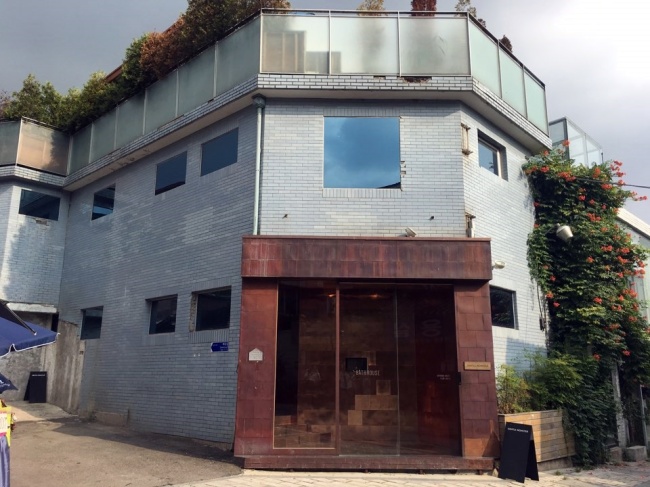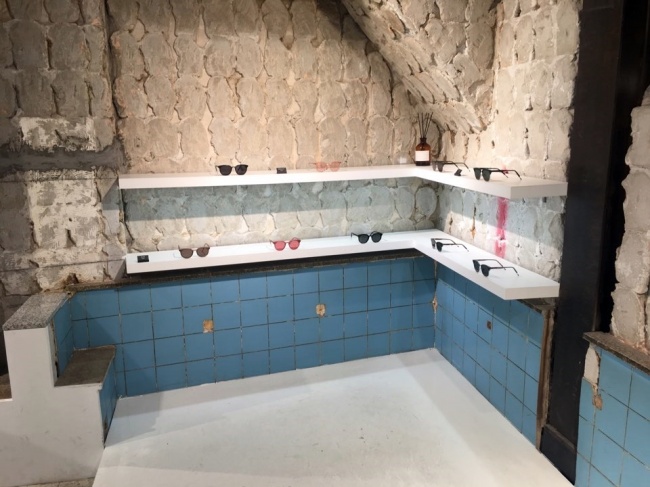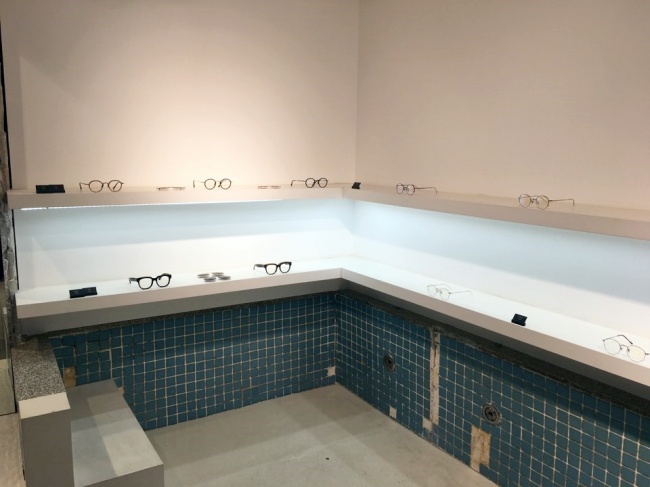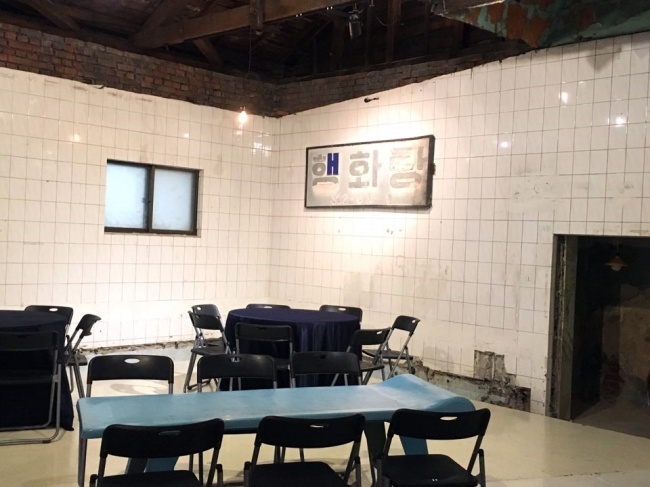[Weekender] Art dives into old bathtubs
Creativity transforms abandoned public bathhouses into hip locales
By Im Eun-byelPublished : Aug. 16, 2018 - 14:14
Public bathhouses used to be part of Korea’s culture. On weekends, sons and fathers, daughters and mothers went to bathhouses together, small plastic baskets filled with toiletries in tow.
The lifestyle reflected how difficult it was for an average household to have hot running water or a bathtub in the old days. But with changes in the housing environment, these days people mostly bathe at home and public bathhouses are considered out of date.
The jjimjilbang has taken the place of bathhouses, fully equipped with entertainment facilities and a multitude of saunas along with huge bathing pools. These days, it is hard to find a plain old public bathhouse without the extra perks, as most have been shut down, shoved out of businesses by spas -- more upscale public bathhouses with the requisite saunas -- as well as jjimjilbang.
The abandoned public bathhouses -- the few that remain -- are now being occupied by those who want to take a creative, unconventional approach to using the space.
The lifestyle reflected how difficult it was for an average household to have hot running water or a bathtub in the old days. But with changes in the housing environment, these days people mostly bathe at home and public bathhouses are considered out of date.
The jjimjilbang has taken the place of bathhouses, fully equipped with entertainment facilities and a multitude of saunas along with huge bathing pools. These days, it is hard to find a plain old public bathhouse without the extra perks, as most have been shut down, shoved out of businesses by spas -- more upscale public bathhouses with the requisite saunas -- as well as jjimjilbang.
The abandoned public bathhouses -- the few that remain -- are now being occupied by those who want to take a creative, unconventional approach to using the space.

Gentle Monster, a local eyewear brand known for its bold, artistic designs, opened its fourth flagship store in Gye-dong, central Seoul. The showroom is in a building that was formerly a public bathhouse.
The bathhouse opened in 1969 and closed in 2014. After the closure, the high-end eyewear fashion brand took over the space and renovated it to reopen the following year.
The brand, interested in “created preservation,” kept the old, original sign reading “bathhouse” at the front. But it had to take the signage down in May.
“Some people walked in with toiletries. They would ask ‘Isn’t this a bathhouse?’ with a confused look on their faces,” said Lee Young-chae, manager of the showroom.
Nearby residents filed a complaint to local authorities that the showroom was confusing. To peacefully resolve the matter, the sign was discarded. But the interior of the three-story building retains the features of its original occupant.
Futuristic sunglasses and various artistic ornaments are displayed amid remnants of tiles and stonewalls.


Installation art piece “Time Transformation,” situated at the middle of the building, is a representative artwork for the showroom. It was inspired by the energy created during the process of heating water. The energy generated by the movement of water from the first floor is converted into electrical energy, powering 162 light bulbs on the second floor.
The brand described the renovation as a way to display the “coexistence of the past and the present.”
Another example of repurposing a bathhouse is Haenghwatang, located in Ahyeon-dong, western Seoul. “Haenghwa” means “apricot blossoms” and “tang” in this case refers to “bathtub.” The bathhouse, which opened in 1958, was named after the apricot trees of the neighborhood.
In 2008, it was earmarked for demolition as part of redevelopment of the area. However, a group of 10 artists took over, reviving the space under the motto of “bathing in art.”
Haenghwatang is now an art gallery that holds various art exhibitions and performances. The artists are also working on collaborating with elderly local residents who used to visit to bathe. When the gallery is not holding art events, it is a coffeehouse with a unique concept.
Walking into the cafe, one is reminded of a kiln-like sauna, with the remaining old red brick walls surrounding the space. Some of the drinks are inspired by bathhouses of the past, taking their names from related words.
Visitors should take off their shoes and wear bright pink and blue bathroom slippers. The menu is written on bath towels, and a blue, plastic scrubbing table now serves as the place to set one’s drink.

Though the art-filled venue will eventually come under the wrecking ball, the owners and visitors are bent on making artistic use of the space as long as they can.
“I would like to scrub the dirt off people’s minds with art until the place closes,” Seo Sang-hyuk, in charge of the art project, said at the opening event of Haenghwatang in 2016. “We are now bathing with art at a place that used to be a bathhouse.”
By Im Eun-byel (silverstar@heraldcorp.com)






![[KH Explains] How should Korea adjust its trade defenses against Chinese EVs?](http://res.heraldm.com/phpwas/restmb_idxmake.php?idx=644&simg=/content/image/2024/04/15/20240415050562_0.jpg&u=20240415144419)












![[Today’s K-pop] Stray Kids to return soon: report](http://res.heraldm.com/phpwas/restmb_idxmake.php?idx=642&simg=/content/image/2024/04/16/20240416050713_0.jpg&u=)